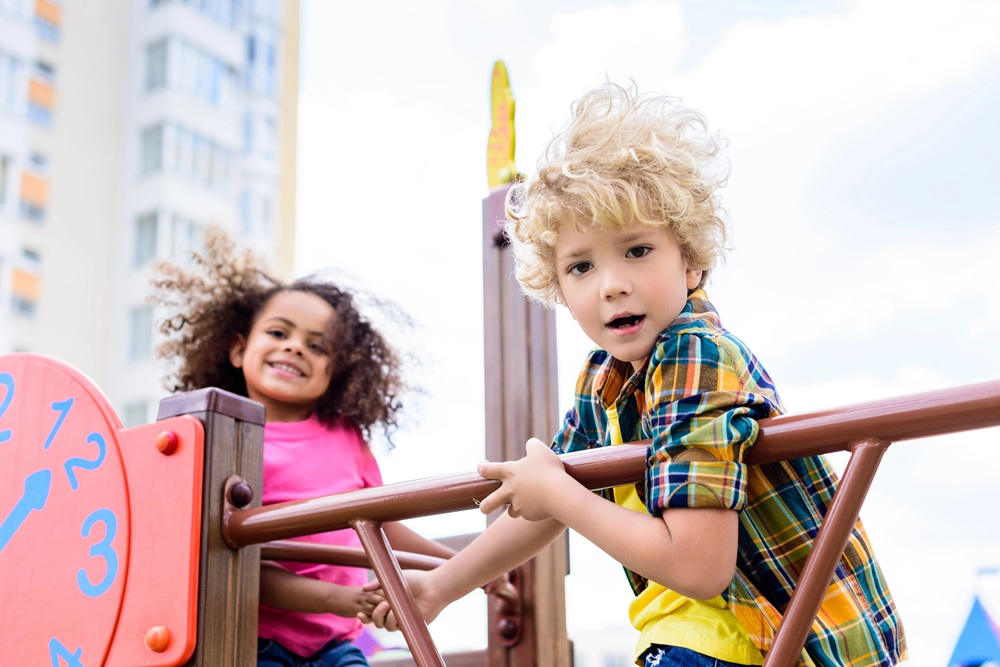In today’s fast-paced digital world, where screen time often outweighs outdoor time, schools are rediscovering the critical role that school playground equipment plays in shaping student development. More than just a space for recess, a well-designed playground is an educational and social hub that promotes physical health, emotional well-being, and meaningful peer interactions.
If you’re a school administrator, district decision-maker, or facilities manager, understanding the long-term benefits of quality playground equipment is essential—not only for student success but also for strengthening your broader school community.
Why School Playground Equipment Matters More Than Ever
Children spend a significant portion of their waking hours at school, and the playground is often their primary opportunity for unstructured, physical play. According to the Centers for Disease Control and Prevention (CDC), children should engage in at least 60 minutes of physical activity daily. Recess, powered by engaging school playground equipment, plays a pivotal role in helping meet that goal.
But it’s not just about physical movement.
Playgrounds serve as real-world classrooms where students develop critical life skills such as communication, conflict resolution, teamwork, and creativity. These social-emotional learning opportunities can’t be replicated in a traditional classroom setting, making outdoor play an indispensable part of the school experience.
The Benefits of Modern School Playground Equipment
Today’s playgrounds go far beyond monkey bars and metal slides. They are thoughtfully designed environments that cater to a range of developmental needs and age groups. Investing in modern school playground equipment can bring a multitude of benefits to your educational environment:
1. Promotes Physical Health
Modern equipment encourages whole-body movement—climbing, swinging, balancing, and jumping—that improves cardiovascular health, strengthens muscles, and enhances motor skills. This physical activity supports healthy growth and helps combat childhood obesity, which remains a significant concern in the U.S.
2. Fosters Cognitive Development
Playgrounds stimulate problem-solving and decision-making. For example, figuring out how to climb a structure or navigate a rope bridge helps develop spatial awareness, sequencing, and critical thinking.
3. Enhances Social Skills
Shared play experiences promote cooperation, empathy, and leadership. On the playground, children learn to take turns, negotiate rules, and resolve disputes—skills that build emotional intelligence and reduce behavioral issues in the classroom.
4. Supports Inclusive Play
Inclusive school playground equipment ensures children of all abilities can play together. This fosters a culture of acceptance and empathy, breaking down social barriers and allowing every student to feel valued and included.
What to Look for in School Playground Equipment
Selecting the right playground equipment is both a practical and visionary task. You want structures that are safe, durable, and aligned with your educational values. Here are key features to consider:
- Age-appropriate Design: Equipment should match the developmental needs of the students using it, whether that’s preschoolers, elementary kids, or middle schoolers.
- Safety Standards Compliance: Look for equipment that meets ASTM and CPSC safety guidelines, and consider surfacing materials that minimize fall-related injuries.
- Modularity and Flexibility: Choose structures that allow for future expansion or customization to adapt to your growing needs.
- Low Maintenance: High-quality materials like powder-coated steel, UV-resistant plastics, and recycled composites reduce wear and tear and increase longevity.
- Eco-friendliness: Many schools today prioritize sustainability. Equipment made from recycled or eco-friendly materials can align with your green initiatives.
Creating a Vision for Your School Playground
Installing new playground equipment is more than a facilities upgrade—it’s a chance to transform your school culture. Here are some tips for building a community-driven playground project:
Involve Your Stakeholders
Invite input from staff, students, and parents during the planning phase. Their perspectives will help you prioritize what your community really wants from its playground. This also builds excitement and ensures broader support for funding or fundraising efforts.
Focus on Universal Design
An inclusive playground considers users of all abilities. Incorporate accessible ramps, sensory panels, ground-level play components, and quiet spaces where students who are neurodivergent or have mobility challenges can also enjoy meaningful play.
Integrate Educational Elements
Modern school playground equipment can reinforce learning through play. For instance, climbing walls with alphabet grips, musical instruments, or panels that promote STEM thinking can create an engaging, cross-curricular play experience.
Funding Your Playground Project
While the value of playgrounds is clear, the funding process can seem daunting. Fortunately, there are many ways to make your project financially viable:
- Government Grants: Federal, state, and local education departments often provide funding for physical activity and wellness-related infrastructure.
- Corporate Sponsorships: Many businesses are eager to support community well-being. Offer naming rights or signage in exchange for funding.
- Fundraisers: From walk-a-thons to donation drives, schools have found success with creative community fundraising efforts.
- Nonprofits and Foundations: Organizations like KaBOOM! and The Trust for Public Land offer grants and planning assistance for school play spaces.
The Long-Term Impact of School Playgrounds
A thoughtfully designed playground becomes more than just a recess spot—it becomes a symbol of your school’s commitment to nurturing the whole child. Over time, the return on investment shows up in:
- Fewer disciplinary issues
- Increased student focus and performance
- Stronger relationships among students, teachers, and families
- A vibrant school culture rooted in health, equity, and inclusion
Partnering with the Right Playground Company
It is crucial to choose a playground partner who understands the unique needs of educational environments. The right team will guide you through site planning, safety compliance, community engagement, and installation. More importantly, they’ll help you realize a vision where school playground equipment serves as a catalyst for connection, learning, and joy.
At Playground Street, we specialize in uplifting communities through play. Our school-focused designs reflect the best in safety, innovation, and inclusive play—empowering educators to create environments where every child thrives.
Conclusion
Ultimately, school playground equipment is about more than just slides and swings. It’s about building stronger school communities—one play-filled moment at a time. By investing in high-quality, inclusive, and educational play spaces, schools lay the groundwork for healthier, happier, and more connected students.
Let’s make recess the most impactful period of the school day.

